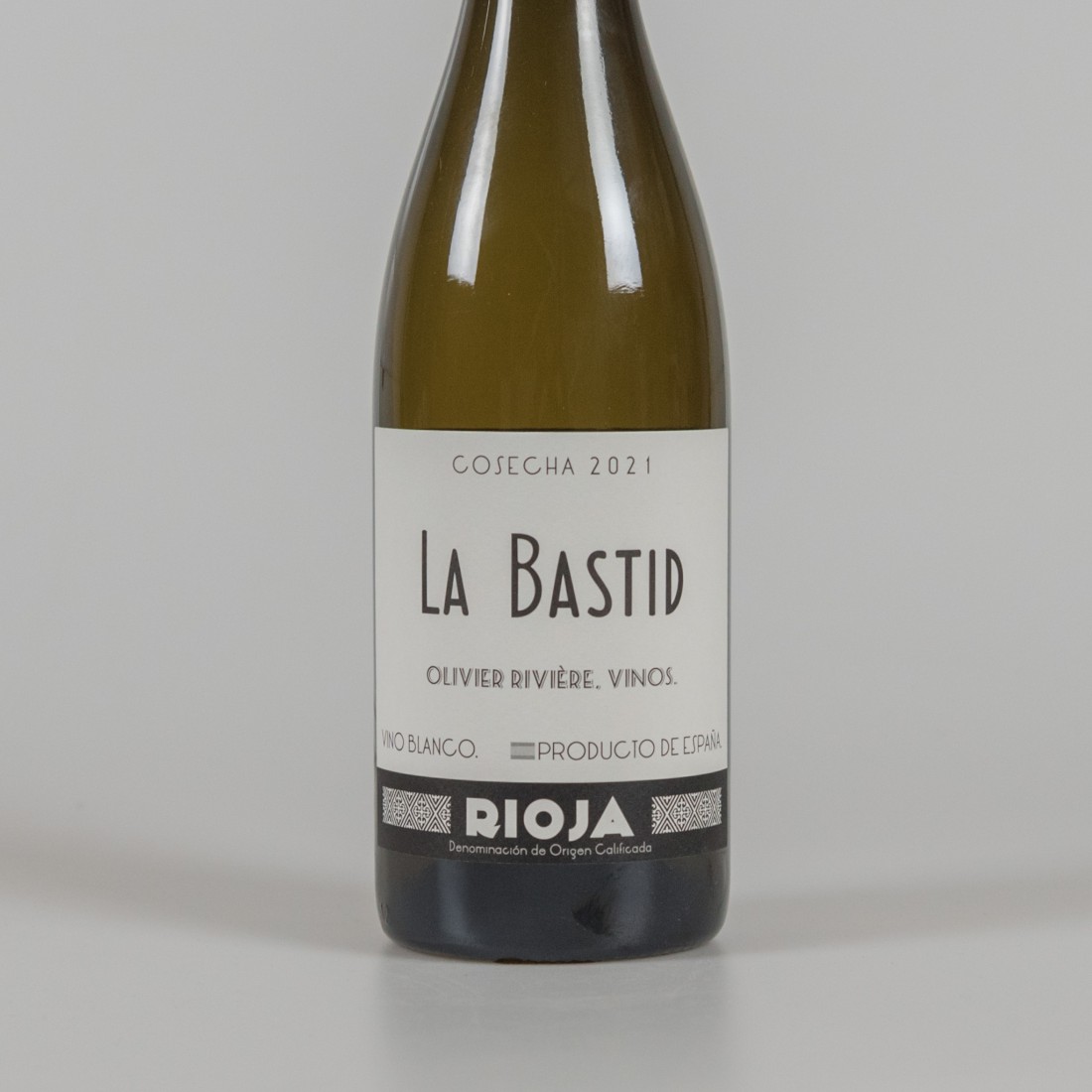| Toon lijst | Volgend artikel |
Rioja Blanco La Bastid - Viura & Garnacha Blanco (22)
Viura met een klein aandeel Malvasia en Grenache blanc | selectie van 9 kleine percelen in Rioja Alavesa | klei en leem terroir | gisting en rijping voor 50% in beton en 50% op Frans hout van verschillende grootte voor 8-10 maanden | zacht | perzik | mandarijn | rijp citrus | vulling | mooi hout | elegante vulling | tikje marsepein | subtiel romig | steenfruit | belegen | heel aantrekkelijk deze 'Côte de Nuits Blanc' aldus Olivier
Olivier Rivière
Hoe komt een Fransman verzeild in Spanje? Vrij makkelijk eigenlijk! Als je stage kan lopen bij een van de beste wijnmakers uit het land, Telmo Rodriguez, sla je dat vanzelfsprekend niet af! Stap voor stap begint Olivier Rivière meer te leren en zorgvuldig te bouwen aan zijn eigen domein, wat nu 11 hectare beslaat. Na ook werkzaam te zijn geweest bij het beroemde Domaine Leroy vinifieert hij zijn wijnen naar de stijl van het perceel en/of dorp waar ze vandaan komen, zoals het ook werkt in de Bourgogne. De witte wijnen zijn lekker bourgondisch en rijp maar met finesse en de rode wijnen zijn eveneens karaktervol, hebben veel fruit maar zijn heel precies, met spanning en een grote complexiteit.
Review
The white 2020 La Bastid was produced with 70% Viura and 30% Garnacha Blanca from Cárdenas, one-third fermented in concrete, one-third in foudre and one-third in 600-liter barrels, where the wines matured for one year with lees but without bâtonnage. It has 13.5% alcohol and is young, fresh, aromatic, fruit driven with floral notes and a light and fresh palate. There was a change in 2018, when he started with concrete (in the past it was 100% in oak), and the wine is fresher and younger. It doesn't have a lot of acidity; it's serious and austere with a bitter twist in the finish. 15,000 bottles produced. It was bottled in September 2021. 92/100 Luis Gutiérrez
Olivier Rivière produced 170,000 bottles, and in the 2022 harvest, he will pick a new plot of Garnacha in the village of Cárdenas for the first time since he planted in 2019. When I asked him about the latest vintages, he told me that he thought 2019 was an easy year in the vineyards with no diseases, uneventful weather, harvested à la carte when each plot was at its optimum moment. He likes the wines, which he finds balanced and with moderate alcohol that he compares with 2015 but with more complexity and with more acidity. 2020 was the most complicated year in the vegetative cycle with a very high pressure of mildew in spring; the summer was somewhat dry but the rains at the beginning of September helped to finish the maturation cycle. The reds are still completing the élevage, but it's a lighter vintage than 2019, very good also with lower yields. 2021 was a complicated year at first, with special care for powdery mildew, but then without problems in May, and there was a cold summer with little sun. There are two different harvests: the Rioja Baja harvest, where they had to harvest early due to rain, and the Rayos harvest, which was very easy, long and fruit driven. For the wines of Rioja Alta and Alavesa, he considers it a great vintage, from the people who waited for the perfect ripeness that took a long time to arrive. . . . He's reshaping the project in Rioja, refocusing to Cárdenas and selling the vineyards he had in Álava; 2020 will be the last vintages for Las Viñas de Eusebio, Losares and Pozo Alto. He is also starting a new winery in Bordeaux, in the Côtes de Bourg, an obscure zone with potential where he has purchased nine hectares of vineyards.



